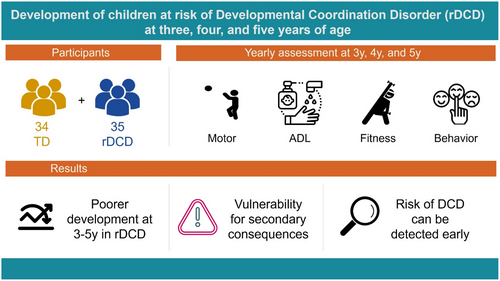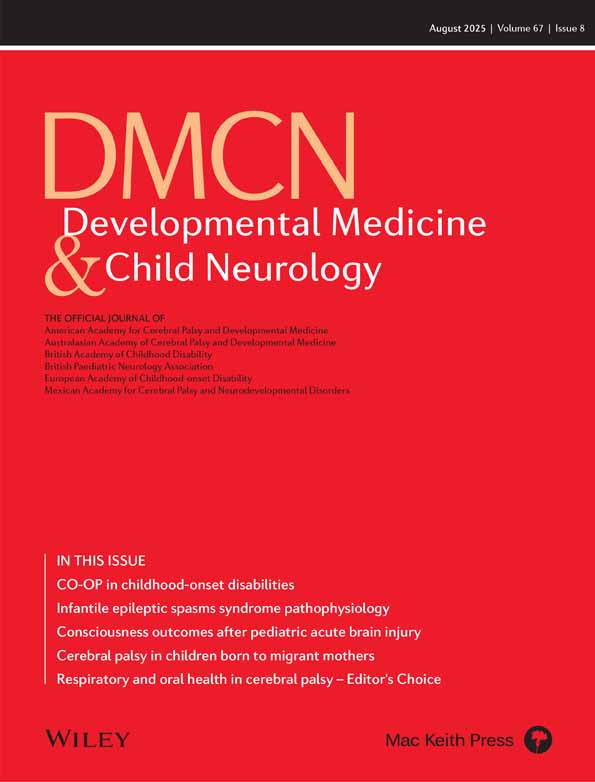Motor, physical, and behavioral performance of 3- to 5-year-old children at risk of developmental coordination disorder: A longitudinal observational study
Some people have difficulties with movement and everyday motor activities. If these difficulties are significant, persistent, and cannot otherwise be explained, this may be indicative of a neurodevelopmental condition known as developmental coordination disorder (DCD). This study followed children who were identified as being at risk for DCD at age 2 or 3 years, and assessed their development at ages 3, 4, and 5 years, comparing them to typically developing peers.
We looked at how well children moved, how they handled daily tasks like independent dressing, and evaluated their strength, body mass index (BMI), and behavior. These areas were assessed through play-based tasks and questionnaires filled out by parents and teachers. We found that, on average, children at risk of DCD experienced more challenges in nearly all areas tested, starting as early as age 3 years. They had more difficulty with motor activities, strength, and everyday tasks, and presented with a lower BMI. Parents and teachers also reported more behavioral challenges in this group. The only area where children at risk for DCD matched their peers was in recognizing shapes among similar ones. The differences remained steady over time as most children who struggled at age 3 years continued to have the same challenges at age 5 years.





